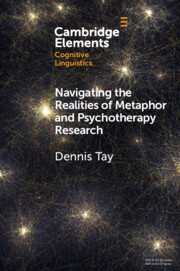Element contents
Navigating the Realities of Metaphor and Psychotherapy Research
Published online by Cambridge University Press: 11 November 2022
Summary
- Type
- Element
- Information
- Online ISBN: 9781108975049Publisher: Cambridge University PressPrint publication: 01 December 2022



